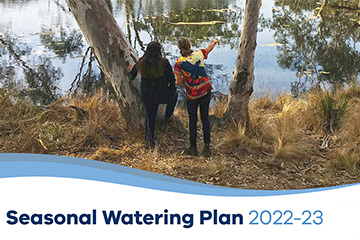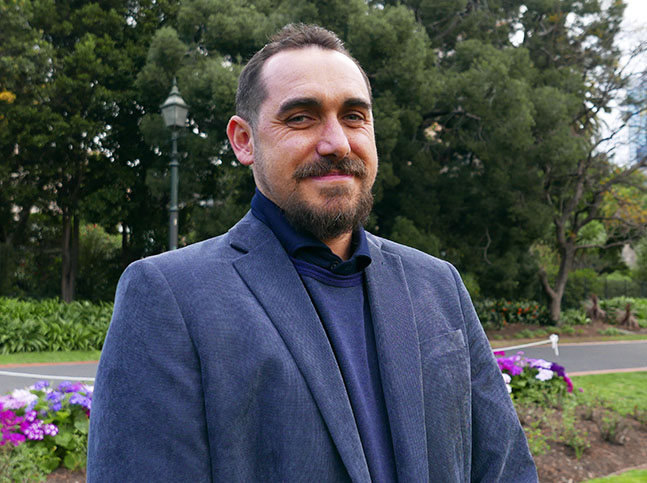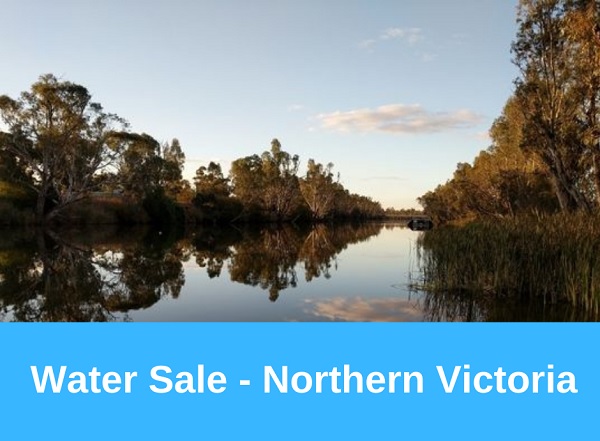Using environmental water to manage blackwater
13 December 2016
Environmental water managers, like anglers and the general community, are really concerned about the impacts of blackwater.
After all, environmental water is used specifically to benefit native fish such as Murray cod in many places, such as the Lindsay River, Mullaroo, Gunbower and Lower Broken creeks.
We are all very concerned about the 'hypoxic' blackwater event which has recently killed fish in the Murray. Hypoxic blackwater is explained below.
This current blackwater event is the result of floods due to significant rainfall bringing a large amount of organic matter into the rivers.
Some floodplains are being inundated for the first time in decades. As there has been a long time between drinks for some floodplains (and parts of floodplains), huge loads of organic matter have built up on forest floors.
River regulation (supplying water to towns and farms), and a warming climate characterised by longer dry periods, reduces the frequency of floodplain flooding. This increases the build-up of organic material on the floodplain and consequently increases the risk of hypoxic blackwater events when floods do occur.
How can environmental water help?
Over the past 10 years, environmental watering has reduced the build-up of organic matter in some areas, lessening the impact of the current blackwater event. This is similar to how planned burns can lessen the impact of bushfires.
Just as land managers carry out frequent cool burns to avoid one big hot, damaging bushfire, environmental water managers try to reduce excessive leaf litter build up on floodplains with regular flooding. Aside from boosting vegetation and providing connectivity across a floodplain, this flooding also aims to reduce the negative impacts of blackwater events.
There is not enough environmental water available to dilute blackwater events in large systems, like the Murray. However, environmental water can help in smaller, isolated waterways and is currently being used to provide refuges for fish and other animals to escape from blackwater.
- Environmental water is currently being used to try to limit the chance of hypoxic blackwater occurring in parts of the Loddon river.
- The Goulburn- Broken Catchment Management Authority worked with Goulburn Murray Water to co-ordinate environmental water deliveries to help improve water quality in Broken Creek. Environmental water deliveries will continue until the end of the irrigation season to maintain water quality and provide habitat and shelter for native fish, such as Murray cod.
Daily monitoring and adaptive water management are helping to limit the impacts of the blackwater event.
What causes blackwater?
Blackwater happens when floodwaters returning to a river from a floodplain contain high levels of organic matter (from leaf litter on forest floors). In the water, microorganisms break down this organic material and use oxygen from the water in the process. The tea-coloured appearance of the water is caused by tannins that leach into the water as leaf litter and other material decays.
Blackwater has always been a natural feature of lowland river systems and occurs during flooding when organic material is washed off the floodplain and into the rivers. Organic material entering the river from floodplains can be great for fish and other river organisms as it provides food and can assist in enabling important ecological processes, such as fish breeding.
During major floods, when very high levels of organic matter enters the river, oxygen can be consumed faster than it is replenished and oxygen can drop to dangerously low levels that is harmful to fish. These events are referred to as hypoxic (no oxygen) blackwater events.
Blackwater is only dangerous to fish and other river organisms when it becomes hypoxic. Read more about blackwater.
Could blackwater events increase in a drying climate?
As the climate becomes warmer, and there are longer periods between drinks for certain floodplains, we may see more blackwater events like this.
If floodplains were able to receive more frequent flooding (as they would have naturally) there would be less leaf litter and carbon build-up and fewer hypoxic blackwater events.
How has environmental water helped manage water quality at Hattah Lakes?
Natural flows and environmental water delivery in September and October 2016 provided much of the water that is currently in Hattah Lakes. The environmental water was good quality and it flowed in before the arrival of low dissolved oxygen water in this reach of the River Murray. As of December all regulators at Hattah are open and the lakes are connected with the river and so due to environmental water, the Hattah Lakes are providing important refuge for fish to use during the current blackwater event.
Many of the Hattah Lakes have received environmental water regularly over the last few years (most have received water in four out of the past six years). As a result, most of the Hattah Lakes have not accumulated dangerous levels of leaf litter.
The environmental water that was delivered to Hattah Lakes has not caused this blackwater event in the Murray – in fact it has very likely provided an important refuge for native fish (as above). Environmental water managers regularly discuss blackwater risks and plan around blackwater risks.
How has environmental water helped manage water quality at Gunbower Forest?
Since 2010-11, parts of Gunbower Forest have regularly received environmental water. As a result, these parts of Gunbower Forest have not have accumulated dangerous levels of leaf litter.
Environmental water managers put quadrants (measurement instruments) in parts of the forest that they plan to water to measure the leaf litter - these are placed in about 100 places in the forest. Data is entered into a model to work out how high the blackwater risk is.
How has environmental water helped manage water quality at Barmah Forest?
There are plans to extend the duration of the natural flooding at Barmah Forest in December 2016 using environmental water.
This will support the plants, fish and waterbirds in the lowest lying wetlands in the forest and it will have no impact on the blackwater that is already happening because the organic material has already been washed off the floodplain from the high natural flows.
Barmah has been watered three out of the past four years; however due to rules and constraints (potential impacts on landholders) we're unable to deliver the amount of water the forest really needs to regularly flush the forest. It needs about 60,000 ML a day for 30 days, whereas we have only been able to deliver 15,000 ML a day.
Environmental water managers have had no influence on the extent and duration of flooding at Barmah Forest this year, nor has water been artificially held on that floodplain to cause blackwater.
Monitoring at Barmah Forest measures how environmental watering affects water quality; bird, fish, frog and waterbug breeding and numbers; and plants. The percentage of native fish caught in creeks and wetlands was much higher (40 percent) in 2015-16 than in 2014-15 when it was just five percent. This is why it's so important to continue supplying environmental water.
Further Information
For further information please call
03 9637 8951 or email
general.enquiries@vewh.vic.gov.au.


